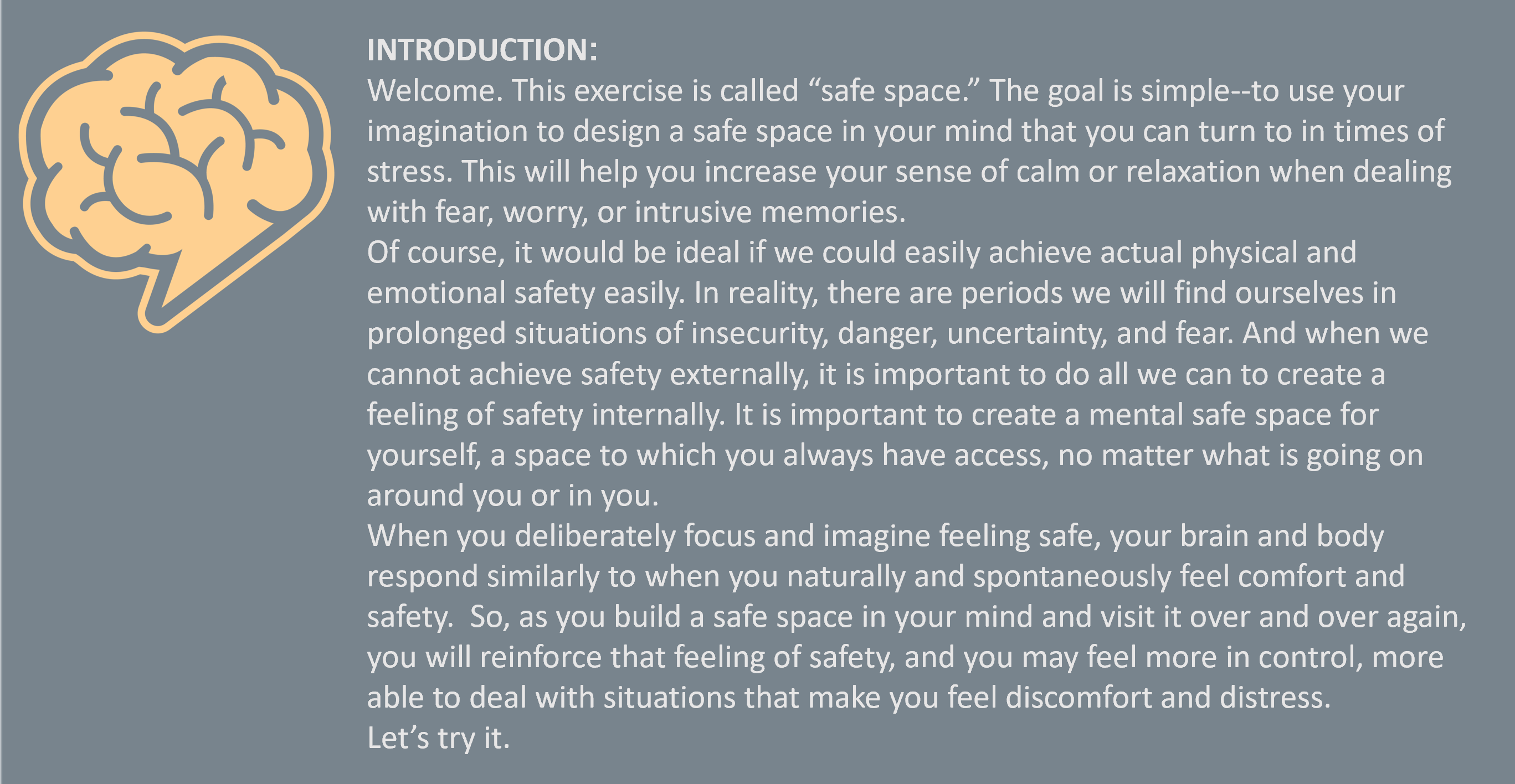
When you deliberately focus and imagine feeling safe, your brain and body respond similarly to when you naturally and spontaneously feel comfort and safety. So, as you build a safe space in your mind and visit it over and over again, you will reinforce that feeling of safety, and you may feel more in control, more able to deal with situations that make you feel discomfort and distress.
While the goal is simple, some elements of this exercise will likely be difficult. So we will move slowly, together.
- Step 1: Think through what “safety” means to you. You can write this down on paper or think about it in your own mind.
Your ideas of “safety” are unique to you, so it may be different than what a friend thinks. It also may consist of imaginary things.
Think for a moment:
- What feels safe to you?
- What does safety feel like? A warm, sunny place? A cool breeze?
- What sounds feel safe? Specific music? The sound of birds chirping?
- Are there physical sensations that are safe or comforting? Holding a hand? Running your hand through grass? The bark of a tree under which you love sitting?
- What smells and tastes are safe or comforting? Fresh coffee? A friend’s perfume?
- Step 2: Now you are going to start putting these ideas together to create your unique safe place.
Try to draw your safe space. [pause]
You are also welcome to write about it, or just imagine it in your mind.
The more of your senses that you can include in your safe space the better. The sights, smells, tastes, sounds, or textures.
- Step 3: You can add to or change details about your safe space if you feel like something is missing.
[pause with time for drawing or writing].
Spend some time in this safe space. Imagine each of those details. And remember to breathe, gently in and out.
You may choose one word or image that represents your safe space, a word that may help you get back there more quickly. For example if the safe space is in a forest – you may think of the word tree or green.
[pause with time for drawing or writing].
- When you have spent sufficient time in your safe space, bring your attention back to the present moment. Place your hands somewhere on the floor or chair, or somewhere on your body that feels safe. Name the textures you feel. For example, soft cotton on my shirt. Warm plastic on my chair.
Take a few deep breaths in and out through your nose.
If your eyes are closed, gently open them. Bring your attention to any object or spot in your immediate vicinity.
Conclusion
And we’re done.
Try to spend a few minutes “going” to your safe space every day.
At first, it is best to practice this exercise when you already feel somewhat calm. As the visualization becomes stronger, then it can be more effective in times of stress.
Also, this safe space exercise is not a replacement for being present or mindful in your current reality. It is a top-down exercise where you are using your brain to enhance your body’s ability to physiologically experience safety. It is not trying to change your current situation or pretend you are somewhere different than you really are.
And now you have a tool that can be used during moments of anxiety, moments of vulnerability or moments of stress as a way to encourage a sense of security and calm. Feel free to try this again, or search for more exercises.